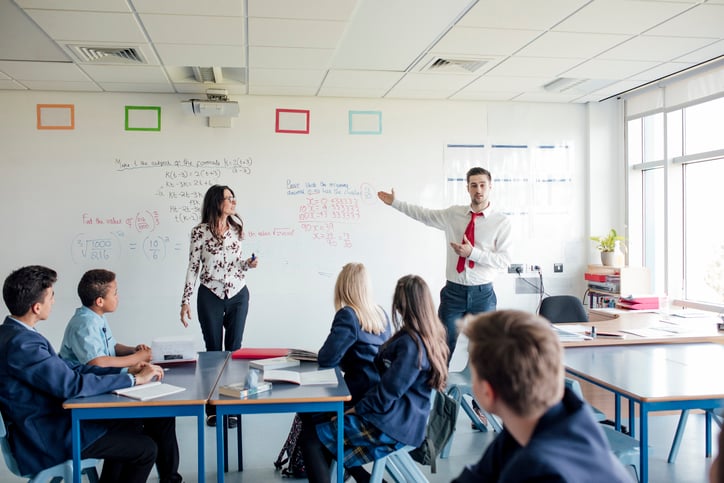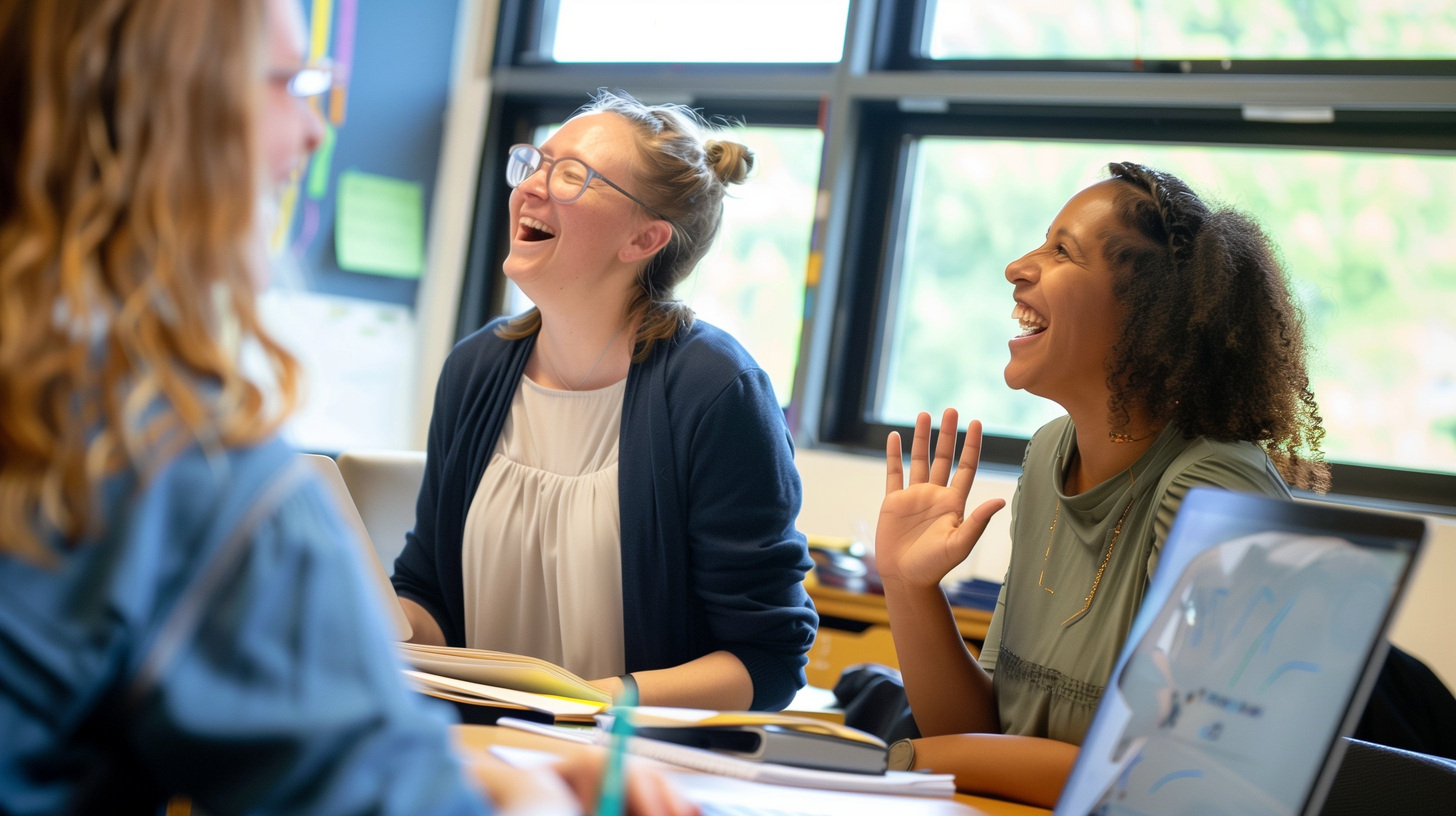The 5P Framework: Putting People at the Center
The 5P Framework provides a comprehensive approach to evaluating and enhancing special education programs, with "People" serving as one of the five key components. By examining factors such as staff qualifications, professional development, collaboration, and emotional support, curriculum directors and special education administrators can gain valuable insights into the effectiveness of their human resources and identify strategies for improvement.
When assessing the "People" component, consider the following critical elements:
- Staff Qualifications and Training
- Are all special education teachers and support staff properly certified and trained?
- Is ongoing professional development provided to keep staff up-to-date with best practices?
- Do staff members have the necessary expertise to meet the diverse needs of students with disabilities?
- Collaboration and Communication
- Is there effective collaboration between special education and general education staff?
- Are there clear communication channels between staff, parents, and administrators?
- Do staff members work together to develop and implement individualized education programs (IEPs)?
- Emotional Well-being and Support
- Are staff members provided with the emotional support and resources needed to manage the unique challenges of working in special education?
- Are there systems in place to prevent burnout and promote self-care among educators?
- Do administrators foster a positive and supportive work environment that values the contributions of all staff members?
By thoroughly examining these aspects of the "People" component, education leaders can develop targeted strategies for supporting and empowering their staff, ultimately leading to better outcomes for students with disabilities.

Professional Development: Investing in Educator Growth
One of the most effective ways to enhance the "People" component of a special education program is through ongoing professional development. By providing staff members with opportunities to expand their knowledge and skills, education leaders can ensure that students receive the highest quality instruction and support. When planning professional development initiatives, consider the following strategies:
- Needs Assessment
- Conduct surveys and discussions with staff members to identify areas where they feel they need additional training or support
- Use data from student assessments and progress monitoring to pinpoint specific instructional strategies or interventions that require further staff development
- Differentiated Learning Opportunities
- Offer a variety of professional development formats, such as workshops, online courses, peer coaching, and mentoring, to accommodate different learning preferences and schedules
- Tailor training content to the specific roles and responsibilities of different staff members, ensuring relevance and applicability
- Evidence-Based Practices
- Focus professional development on research-supported strategies and interventions that have proven effective for students with disabilities
- Provide ongoing coaching and support to help staff members implement new practices with fidelity and confidence
- Collaborative Learning
- Encourage staff members to share their expertise and experiences through professional learning communities (PLCs) or peer coaching arrangements
- Foster a culture of continuous improvement and collective problem-solving, where staff members work together to address challenges and refine their practices
By investing in the professional growth of special education staff, education leaders can build a highly skilled, knowledgeable, and confident team that is well-equipped to meet the diverse needs of students with disabilities.
Collaboration and Communication: Building Strong Teams
Another critical aspect of the "People" component is the level of collaboration and communication among staff members. When educators work together effectively, they can create a seamless and cohesive support system for students with disabilities, ensuring that their individual needs are met across all learning environments. To strengthen collaboration and communication within special education teams, consider the following strategies:
- Shared Planning Time
- Provide regular opportunities for special education and general education teachers to collaborate on lesson planning, differentiation strategies, and student support
- Encourage therapists, paraprofessionals, and other support staff to participate in planning meetings to offer their unique perspectives and expertise
- Clear Roles and Responsibilities
- Clearly define the roles and responsibilities of each staff member, ensuring that everyone understands their part in supporting student success
- Establish protocols for communication and information-sharing among team members, such as regular meetings, shared documentation systems, or digital collaboration tools
- Family Engagement
- Involve parents and guardians as active partners in their child's education, soliciting their input and feedback on IEP goals, accommodations, and progress
- Maintain open and frequent communication with families through various channels, such as email, phone calls, or secure messaging platforms
- Interdisciplinary Collaboration
- Foster collaboration among professionals from different disciplines, such as occupational therapists, speech-language pathologists, and school psychologists
- Encourage cross-disciplinary problem-solving and knowledge-sharing to develop comprehensive, holistic support plans for students with complex needs
By fostering a culture of collaboration and open communication, education leaders can create a strong, cohesive team that works together seamlessly to support the success of every student with disabilities.

Emotional Well-being and Support: Caring for the Caregivers
Finally, it is crucial to recognize the emotional demands placed on special education professionals and provide them with the support they need to maintain their well-being. Educators who work with students with disabilities often face unique challenges, such as managing challenging behaviors, navigating complex paperwork and legal requirements, and advocating for their students' needs. To support the emotional well-being of special education staff, consider the following strategies:
- Wellness Programs
- Offer stress management workshops, mindfulness training, or other wellness initiatives to help staff members build resilience and coping skills
- Encourage self-care practices and provide resources for mental health support, such as employee assistance programs or counseling services
- Positive School Climate
- Foster a positive, supportive school climate that values the contributions and well-being of all staff members
- Recognize and celebrate the achievements and efforts of special education professionals, acknowledging the vital role they play in student success
- Adequate Resources and Support
- Ensure that special education staff have access to the resources, materials, and technology they need to effectively support their students
- Provide adequate staffing and scheduling to prevent burnout and allow for reasonable caseloads and planning time
- Open Door Policy
- Maintain an open-door policy where staff members feel comfortable seeking guidance, support, or feedback from administrators
- Regularly check in with staff members to assess their well-being and identify any challenges or concerns they may be facing
By prioritizing the emotional well-being and support of special education professionals, education leaders can create a healthy, resilient team that is better equipped to handle the demands of their roles and provide high-quality support to students with disabilities.

Conclusion
The "People" component of the 5P Framework underscores the critical role that educators and support staff play in the success of special education programs. By focusing on staff qualifications, professional development, collaboration, and emotional well-being, education leaders can build strong, skilled, and compassionate teams that are well-prepared to meet the diverse needs of students with disabilities.
Through targeted investments in professional growth, fostering a culture of collaboration and communication, and providing robust emotional support, special education administrators can empower their staff to achieve their full potential and make a meaningful difference in the lives of their students. By prioritizing the "People" component of their programs, education leaders can create an environment where every educator feels valued, supported, and equipped to help every student with disabilities thrive.
This article is part of a 5-part series on Stages' 5P Framework: People, Place, Practices, Procedures, and Products. The articles in this series include:







